Debi Prasanna Mohanty
A Simple Approach to Image Tilt Correction with Self-Attention MobileNet for Smartphones
Oct 31, 2021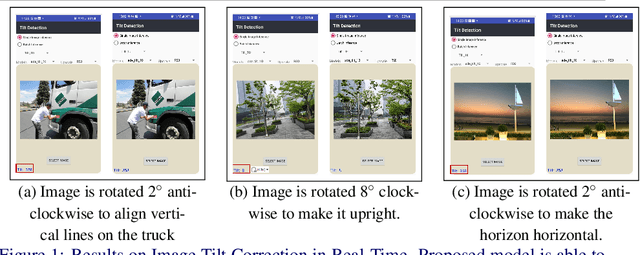
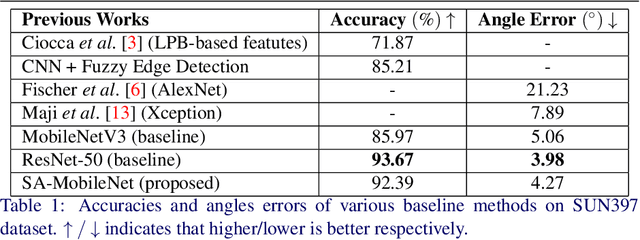
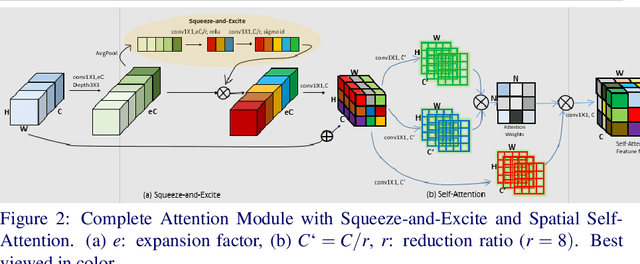

Abstract:The main contributions of our work are two-fold. First, we present a Self-Attention MobileNet, called SA-MobileNet Network that can model long-range dependencies between the image features instead of processing the local region as done by standard convolutional kernels. SA-MobileNet contains self-attention modules integrated with the inverted bottleneck blocks of the MobileNetV3 model which results in modeling of both channel-wise attention and spatial attention of the image features and at the same time introduce a novel self-attention architecture for low-resource devices. Secondly, we propose a novel training pipeline for the task of image tilt detection. We treat this problem in a multi-label scenario where we predict multiple angles for a tilted input image in a narrow interval of range 1-2 degrees, depending on the dataset used. This process induces an implicit correlation between labels without any computational overhead of the second or higher-order methods in multi-label learning. With the combination of our novel approach and the architecture, we present state-of-the-art results on detecting the image tilt angle on mobile devices as compared to the MobileNetV3 model. Finally, we establish that SA-MobileNet is more accurate than MobileNetV3 on SUN397, NYU-V1, and ADE20K datasets by 6.42%, 10.51%, and 9.09% points respectively, and faster by at least 4 milliseconds on Snapdragon 750 Octa-core.
On-Device Content Moderation
Jul 25, 2021
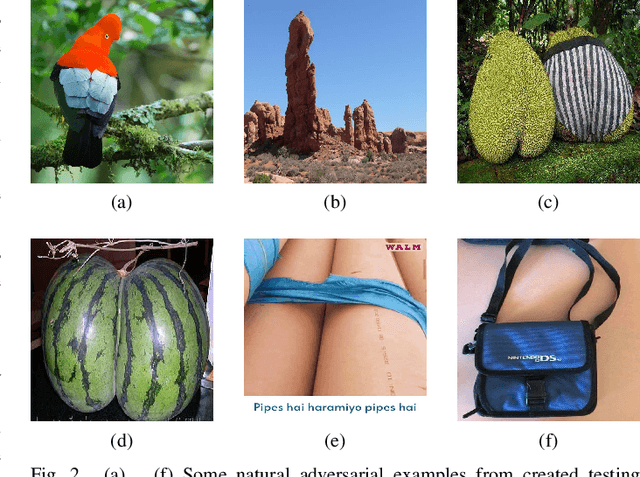


Abstract:With the advent of internet, not safe for work(NSFW) content moderation is a major problem today. Since,smartphones are now part of daily life of billions of people,it becomes even more important to have a solution which coulddetect and suggest user about potential NSFW content present ontheir phone. In this paper we present a novel on-device solutionfor detecting NSFW images. In addition to conventional porno-graphic content moderation, we have also included semi-nudecontent moderation as it is still NSFW in a large demography.We have curated a dataset comprising of three major categories,namely nude, semi-nude and safe images. We have created anensemble of object detector and classifier for filtering of nudeand semi-nude contents. The solution provides unsafe body partannotations along with identification of semi-nude images. Weextensively tested our proposed solution on several public datasetand also on our custom dataset. The model achieves F1 scoreof 0.91 with 95% precision and 88% recall on our customNSFW16k dataset and 0.92 MAP on NPDI dataset. Moreover itachieves average 0.002 false positive rate on a collection of safeimage open datasets.
ScreenSeg: On-Device Screenshot Layout Analysis
Apr 21, 2021
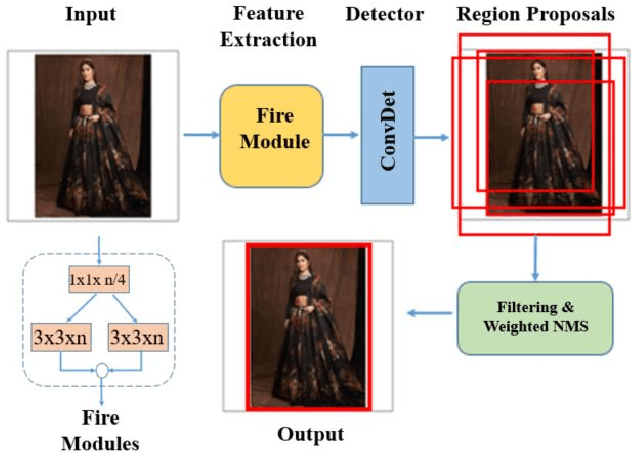

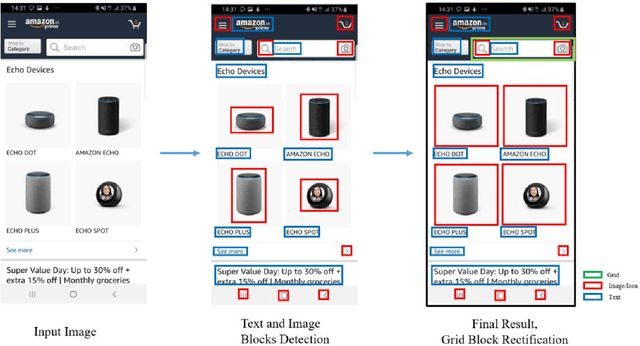
Abstract:We propose a novel end-to-end solution that performs a Hierarchical Layout Analysis of screenshots and document images on resource constrained devices like mobilephones. Our approach segments entities like Grid, Image, Text and Icon blocks occurring in a screenshot. We provide an option for smart editing by auto highlighting these entities for saving or sharing. Further this multi-level layout analysis of screenshots has many use cases including content extraction, keyword-based image search, style transfer, etc. We have addressed the limitations of known baseline approaches, supported a wide variety of semantically complex screenshots, and developed an approach which is highly optimized for on-device deployment. In addition, we present a novel weighted NMS technique for filtering object proposals. We achieve an average precision of about 0.95 with a latency of around 200ms on Samsung Galaxy S10 Device for a screenshot of 1080p resolution. The solution pipeline is already commercialized in Samsung Device applications i.e. Samsung Capture, Smart Crop, My Filter in Camera Application, Bixby Touch.
On-Device Text Image Super Resolution
Nov 20, 2020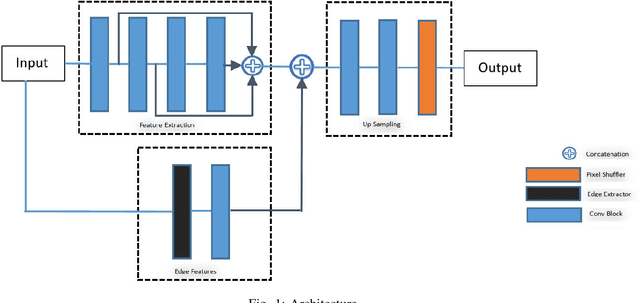
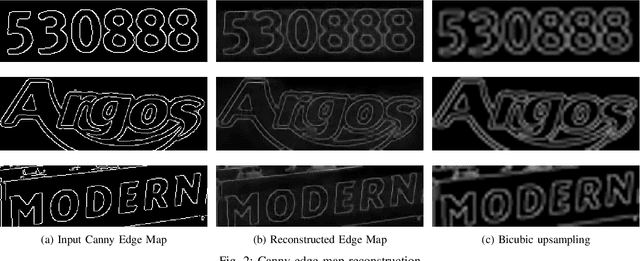
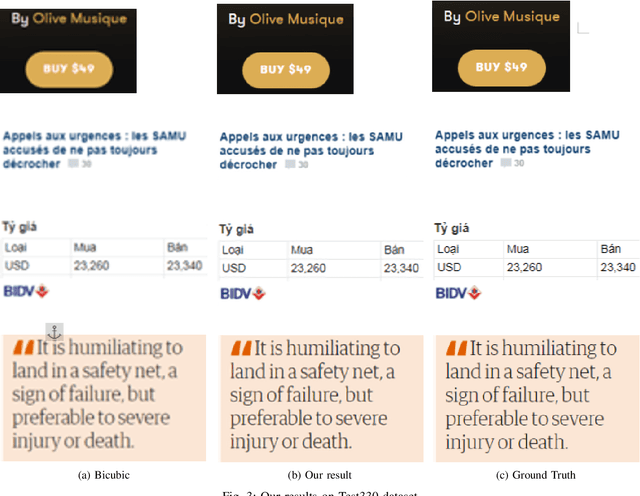
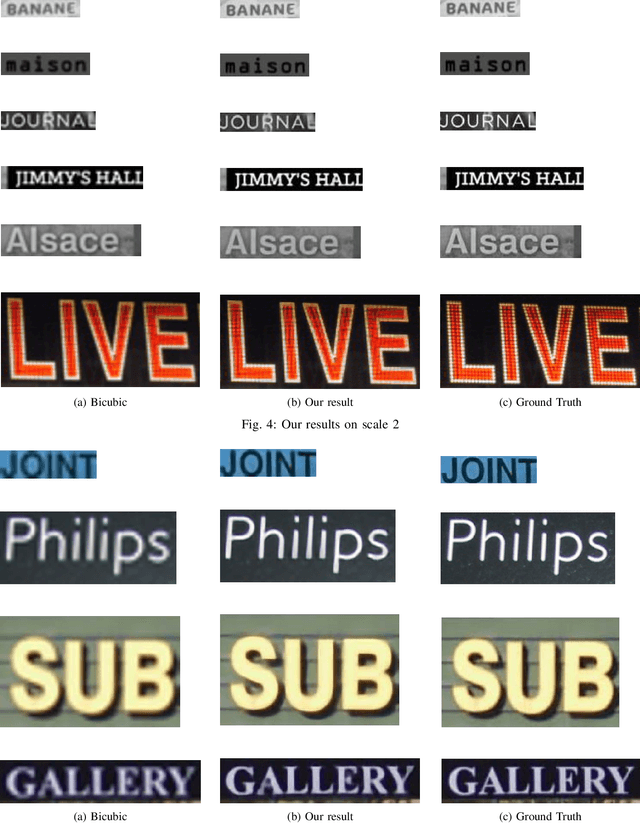
Abstract:Recent research on super-resolution (SR) has witnessed major developments with the advancements of deep convolutional neural networks. There is a need for information extraction from scenic text images or even document images on device, most of which are low-resolution (LR) images. Therefore, SR becomes an essential pre-processing step as Bicubic Upsampling, which is conventionally present in smartphones, performs poorly on LR images. To give the user more control over his privacy, and to reduce the carbon footprint by reducing the overhead of cloud computing and hours of GPU usage, executing SR models on the edge is a necessity in the recent times. There are various challenges in running and optimizing a model on resource-constrained platforms like smartphones. In this paper, we present a novel deep neural network that reconstructs sharper character edges and thus boosts OCR confidence. The proposed architecture not only achieves significant improvement in PSNR over bicubic upsampling on various benchmark datasets but also runs with an average inference time of 11.7 ms per image. We have outperformed state-of-the-art on the Text330 dataset. We also achieve an OCR accuracy of 75.89% on the ICDAR 2015 TextSR dataset, where ground truth has an accuracy of 78.10%.
On-Device Information Extraction from SMS using Hybrid Hierarchical Classification
Feb 03, 2020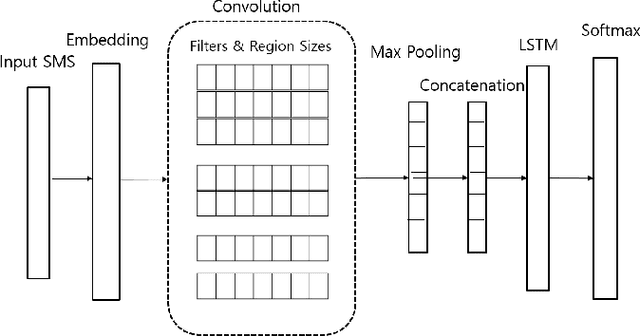
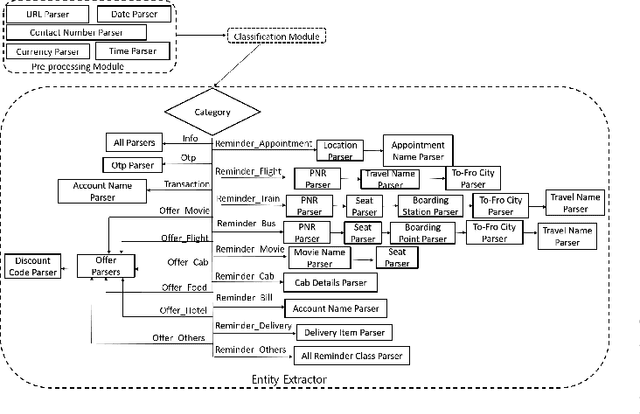

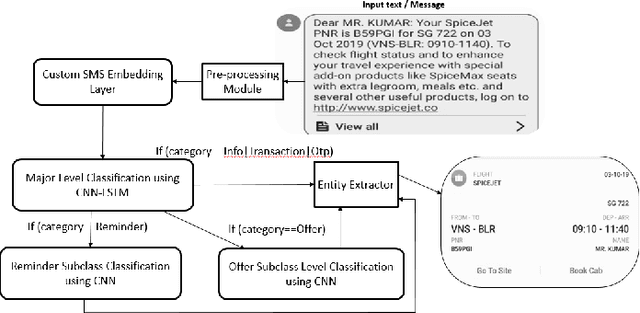
Abstract:Cluttering of SMS inbox is one of the serious problems that users today face in the digital world where every online login, transaction, along with promotions generate multiple SMS. This problem not only prevents users from searching and navigating messages efficiently but often results in users missing out the relevant information associated with the corresponding SMS like offer codes, payment reminders etc. In this paper, we propose a unique architecture to organize and extract the appropriate information from SMS and further display it in an intuitive template. In the proposed architecture, we use a Hybrid Hierarchical Long Short Term Memory (LSTM)-Convolutional Neural Network (CNN) to categorize SMS into multiple classes followed by a set of entity parsers used to extract the relevant information from the classified message. The architecture using its preprocessing techniques not only takes into account the enormous variations observed in SMS data but also makes it efficient for its on-device (mobile phone) functionalities in terms of inference timing and size.
An Efficient Architecture for Predicting the Case of Characters using Sequence Models
Jan 30, 2020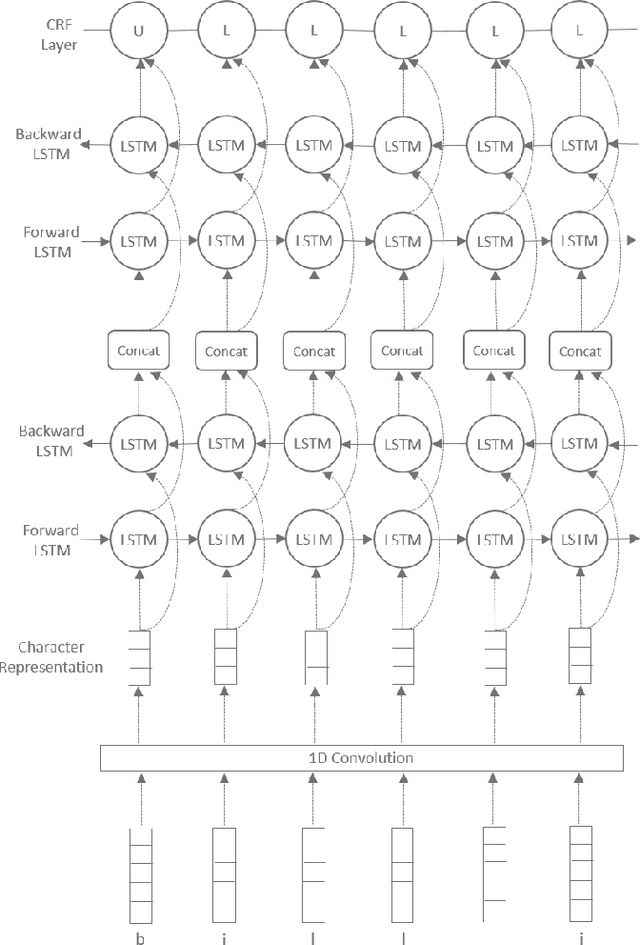
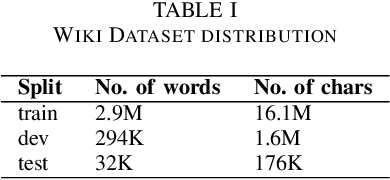


Abstract:The dearth of clean textual data often acts as a bottleneck in several natural language processing applications. The data available often lacks proper case (uppercase or lowercase) information. This often comes up when text is obtained from social media, messaging applications and other online platforms. This paper attempts to solve this problem by restoring the correct case of characters, commonly known as Truecasing. Doing so improves the accuracy of several processing tasks further down in the NLP pipeline. Our proposed architecture uses a combination of convolutional neural networks (CNN), bi-directional long short-term memory networks (LSTM) and conditional random fields (CRF), which work at a character level without any explicit feature engineering. In this study we compare our approach to previous statistical and deep learning based approaches. Our method shows an increment of 0.83 in F1 score over the current state of the art. Since truecasing acts as a preprocessing step in several applications, every increment in the F1 score leads to a significant improvement in the language processing tasks.
On-Device User Intent Prediction for Context and Sequence Aware Recommendation
Sep 18, 2019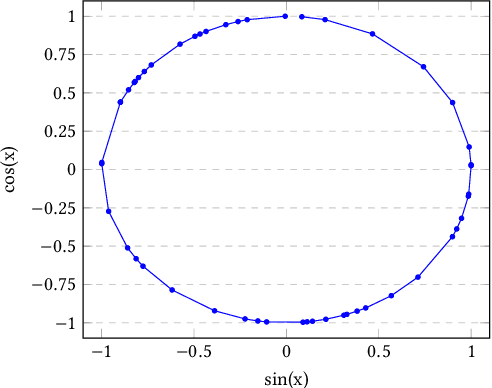
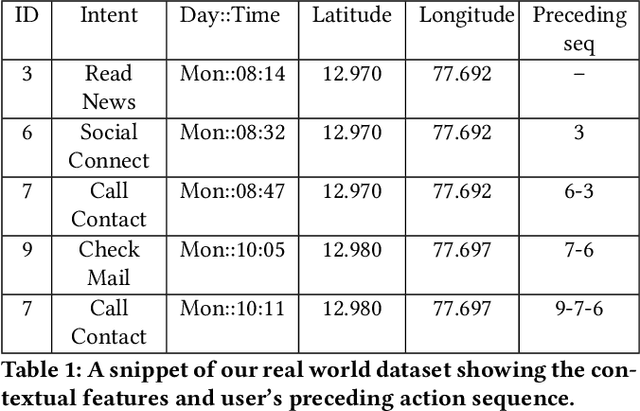

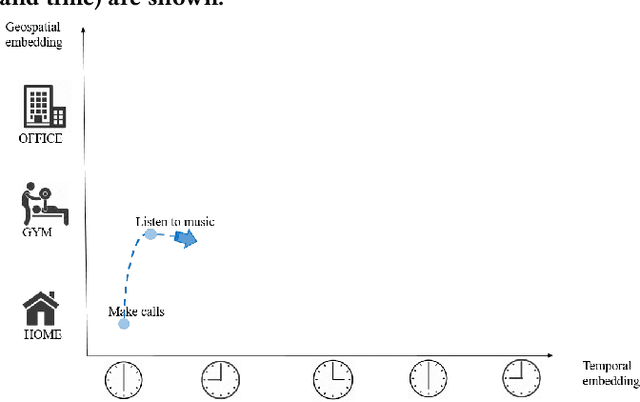
Abstract:The pursuit of improved accuracy in recommender systems has led to the incorporation of user context. Context-aware recommender systems typically handle large amounts of data which must be uploaded and stored on the cloud, putting the user's personal information at risk. While there have been previous studies on privacy-sensitive and context-aware recommender systems, there has not been a full-fledged system deployed in an isolated mobile environment. We propose a secure and efficient on-device mechanism to predict a user's next intention. The knowledge of the user's real-time intention can help recommender systems to provide more relevant recommendations at the right moment. Our proposed algorithm is both context and sequence aware. We embed user intentions as weighted nodes in an n-dimensional vector space where each dimension represents a specific user context factor. Through a neighborhood searching method followed by a sequence matching algorithm, we search for the most relevant node to make the prediction. An evaluation of our methodology was done on a diverse real-world dataset where it was able to address practical scenarios like behavior drifts and sequential patterns efficiently and robustly. Our system also outperformed most of the state-of-the-art methods when evaluated for a similar problem domain on standard datasets.
 Add to Chrome
Add to Chrome Add to Firefox
Add to Firefox Add to Edge
Add to Edge